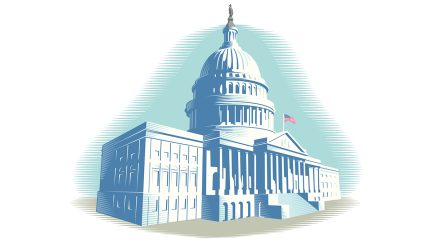Want the latest retirement plan adviser news and insights? Sign up for PLANADVISER newsletters.
Why 529 Education Savings Plans Are More Valuable Than Ever
The SECURE 2.0 Act makes 529s a more appealing investment and potentially an easy financial wellness option for sponsors intimidated by the student loan matching provision.

The SECURE 2.0 Act of 2022 introduced the student loan matching provision, which will allow employers to match participants’ student loan payments with retirement plan contributions starting in 2024. But this was not the only noteworthy change for those interested in higher education-related financial benefits.
SECURE 2.0 also permits excess 529 plan assets to be rolled over into a Roth IRA, subject to the normal IRA annual contribution limits.
The 529 plans are qualified educational expense programs that permit contributions to tax-advantaged accounts that can be invested and used to pay for the qualified education expenses of the beneficiary. SECURE 2.0 allows certain assets in a 529 plan maintained for at least 15 years for a designated beneficiary to be rolled over on a tax-free basis to a Roth IRA for the benefit of the beneficiary.
This makes the risk an individual of being unable to access excess savings in a college savings plan without incurring the 10% withdrawal penalty (a deterrent to starting a 529 in the first place), less likely. This also makes 529 plan benefits potentially more attractive as a workplace benefit and tool for recruitment and retention.
Improved access to tax-preferred college savings plans, or 529s, can be offered as a “low-cost and effective” benefit for a multigenerational workforce, says Barrett Scruggs, the vice president of workplace financial wellbeing at SoFi at Work. Financial wellness for people paying back student debt is important for sponsors. College expenses are not just important for students and recent graduates. They are also important for employees with or planning to have children or grandchildren, since many in those groups want to begin saving for their higher education.
Employers can offer 529 plan benefits as part of a comprehensive financial wellness program that is appealing to employees from different age groups and with different financial wellness needs, says Scruggs.
But what is the point of offering a 529 benefit program if employees can invest in 529 plans on their own time?
Scruggs answers that, “529s can be confusing,” and employers can simplify the process for employees. An employer can also set up automatic payroll deductions for a 529, which makes saving automated and therefore easier to manage. Additionally, employers can opt to add their own contributions to a 529 plan, similar in some ways to a 401(k) match.
Employers “know they have to do something” as it relates to college savings and financial wellness in light of changes made by SECURE 2.0. Though the student loan match has taken much of the attention, offering a 529 is a more appealing investment now that SECURE 2.0 allows excess savings to be rolled over into Roth IRAs.
You Might Also Like:

2024 Sees Net Inflows of $3.1B to 529 Tuition Savings Plans

House and Senate Reintroduce Bills to Permit CITs in 403(b) Plans
